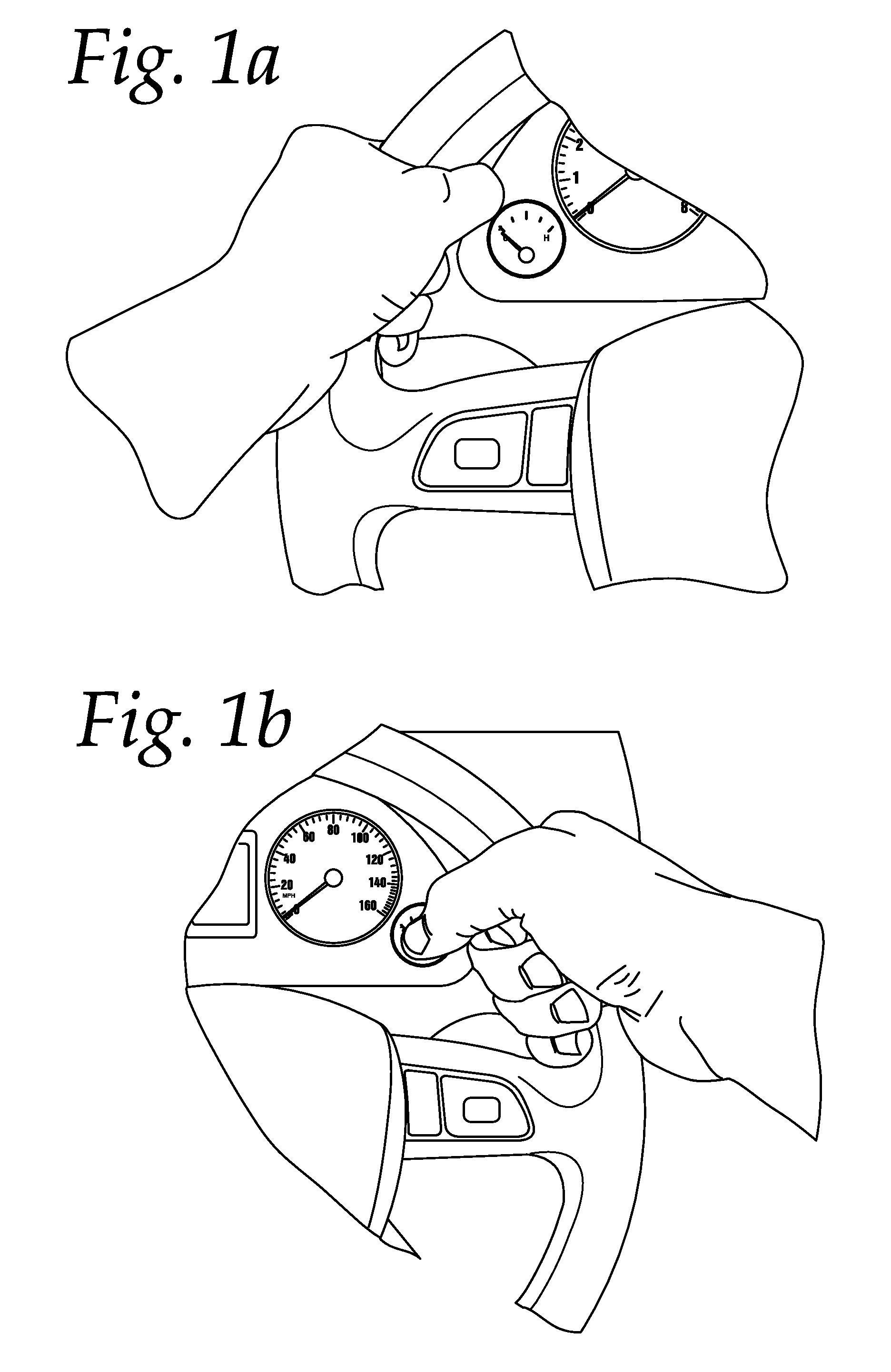Integrated vehicle control system and apparatus
a vehicle control and integrated technology, applied in vehicle position/course/altitude control, process and machine control, instruments, etc., can solve problems such as failure of turn signal engagement, signal lights turning off prematurely, and problems that have existed
- Summary
- Abstract
- Description
- Claims
- Application Information
AI Technical Summary
Benefits of technology
Problems solved by technology
Method used
Image
Examples
example 1
Activating Actuators 40, 50
[0079]When a motor vehicle that has been modified to include the system and apparatus of the present invention, actuators 40, 50 may be activated when the motor vehicle's ignition (not shown) is turned on and the transmission 250 of the motor vehicle is in the neutral or park position. An operator of the motor vehicle may then activate actuators 40 and 50 by simultaneously depressing actuators 40 and 50 for a time that is within a pre-set threshold time range and further described herein above. Alternatively, when the motor vehicle's ignition is turned on and the motor vehicle is stopped (transmission 250 is in the drive position and the motor vehicle operator has engaged the motor vehicle's brake), simultaneously pressing actuators 40 and 50 immediately activates actuators 40 and 50. As further described herein above in paragraph [0077], once actuators 40 and 50 are activated, depressing actuator 40 will cause transmission 250 to be up shifted into gear, ...
example 4
Using Actuators 40, 50 to Move the Motor Vehicle Forward
[0090]When a motor vehicle that has been modified to include the system and apparatus of the present invention, the following examples illustrate adaptations of the present invention in which the motor vehicle's ignition (not shown) is turned on, and actuators 40 and 50 are activated and are subsequently being used as thumb shifters to move the motor vehicle's transmission 250 from either the park or the neutral position into a forward gear. In the present adaptation:
[0091]1) depressing actuator 40 will cause transmission 250 to be placed in first gear and the car will move forward; and
[0092]2) in an alternative embodiment of the present adaptation, depressing actuator 40 simultaneously while depressing the motor vehicle's brake pedal will cause transmission 250 to be placed in first gear and the motor vehicle will not move forward until the brake pedal is released.
example 5
Using Actuators 40, 50 to Move the Motor Vehicle in Reverse
[0093]When a motor vehicle that has been modified to include the system and apparatus of the present invention, the following examples illustrate adaptations of the present invention in which the motor vehicle's ignition (not shown) is turned on, and actuators 40 and 50 are activated and are subsequently being used as thumb shifters to move the motor vehicle's transmission 250 from either the park or the neutral position into the reverse gear. In the present adaptation:
[0094]1) the reverse position of transmission 250 can be immediately engaged when the motor vehicle is stopped and transmission 250 is either in the neutral position or in the park position by depressing actuator 50; and
[0095]2) in another embodiment of the present adaptation, the reverse position of transmission 250 can be immediately engaged when the motor vehicle is stopped in either the neutral or park positions with the motor vehicle's brake pedal depress...
PUM
 Login to View More
Login to View More Abstract
Description
Claims
Application Information
 Login to View More
Login to View More - R&D
- Intellectual Property
- Life Sciences
- Materials
- Tech Scout
- Unparalleled Data Quality
- Higher Quality Content
- 60% Fewer Hallucinations
Browse by: Latest US Patents, China's latest patents, Technical Efficacy Thesaurus, Application Domain, Technology Topic, Popular Technical Reports.
© 2025 PatSnap. All rights reserved.Legal|Privacy policy|Modern Slavery Act Transparency Statement|Sitemap|About US| Contact US: help@patsnap.com



